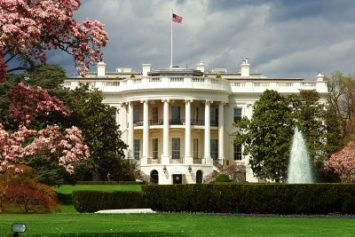Reforming environmental laws, rules, and policies occupies about a half of President Donald Trump’s Legislative Outline for Rebuilding Infrastructure in America. Since moving into the White House, the administration has taken up the call to simplify and speed up the process of conducting environmental reviews of federal actions, including major infrastructure projects, as required under the National Environmental Policy Act (NEPA).

The President’s Outline recommends multiple avenues to shorten NEPA reviews to no more than 2 years. The Outline also advocates for changes to major environmental programs affecting drinking water systems, waterways, and Superfund and Brownfield sites. The EPA would be central to most of these changes with the Agency’s powers being extended in some cases and truncated in others.
Environmental Reviews
Before groundbreaking begins, major infrastructure projects may require many federal, state, and local permits that are difficult if not impossible to obtain before the full NEPA review process is complete. Currently, 3 to 5 years are needed to complete the NEPA process, although some reviews take much longer. Changes proposed in the Outline include the following:
- Establish a firm deadline of 21 months for lead agencies to complete their environmental reviews through the issuance of a Finding of No Significant Impact (FONSI) or Record of Decision (ROD). Additionally, establish a firm deadline of 3 months after the lead agency’s FONSI or ROD for federal agencies to make decisions with respect to the necessary permits.
- Require the lead federal agency to develop a single federal environmental review document to be utilized by all agencies and a single ROD to be signed by the lead federal agency and all cooperating agencies.
- The heart of the NEPA process is the evaluation of alternatives. The Outline seeks to clarify that alternatives outside the scope of an agency’s authority or an applicant’s capability are not feasible alternatives for purposes of NEPA. This would allow agencies and applicants to focus their resources and analyses on those alternatives that are actually legally, technically, and economically feasible.
The Outline also proposes that the Council on Environmental Quality (CEQ) be directed to issue regulations to streamline the NEPA process.
Water Infrastructure Finance and Innovation Act (WIFIA)
WIFIA provides long-term, low-cost supplemental loans for regionally and nationally significant water infrastructure projects. The Outline recommends:
- Increasing EPA budget authority to allow the Agency to subsidize costs under WIFIA. The current lending limit of $3.2 billion would be removed.
- Amending the law to include flood mitigation, navigation, and water supply to allow the EPA to service the full water cycle and provide one streamlined and integrated lending process to project sponsors.
- Removing the restriction that requires borrowers to be community water systems instead of just water systems; this would allow drinking water providers and other public authorities to participate in WIFIA and the Drinking Water State Revolving Fund (DWSRF) programs.
Water Infrastructure
The Clean Water State Revolving Fund (CWSRF) is generally restricted to publicly owned wastewater projects. The Outline recommends authorizing the CWSRF to also provide financial assistance to privately owned public-purpose treatment works. In addition, the Outline seeks to:
- Amend the law to substantially reduce the federal review process when project funding is primarily nonfederal and the federal share is minimal.
- Expand the EPA’s authority to encourage tests and experimentation to permit and explore alternative and innovative approaches to the overall project development process and to develop more effective approaches to project planning, project development, finance, design, construction, maintenance, and operations.
Superfund and Brownfields
- Currently, Superfund sites are not eligible for funding from the Brownfields program. The Outline recommends an amendment to the Small Business Liability Relief and Brownfields Revitalization Act to include a Superfund revolving fund to facilitate new investment into Superfund cleanup and reuse and provide nonliable third parties a low interest source of funds to perform removals, remedial design, remedial action, and long-term stewardship.
- CERCLA does not provide express authority for the EPA to enter into certain administrative settlement cleanup and reuse agreements with Bona Fide Prospective Purchasers (BFPP). The Outline recommends amending the law to provide the Agency with express settlement authority to enter into administrative agreements with BFPPs and other statutorily protected parties and to enter into administrative agreements with any party to perform remedial action in appropriate circumstances.
EPA Authority
The Outline would reduce to one the number of reviews of NEPA Environmental Impact Statements (EIS) the EPA may conduct.
Under the current interpretation of the Clean Water Act (CWA), the EPA, not the Secretary of the Army, has final authority to construe the jurisdictional term navigable waters under Section 404 of the Clean Water Act. The Outline recommends establishing the Secretary of the Army’s authority to make jurisdictional determinations under the CWA to eliminate duplication of work and streamline permit decisions.
Also, the Outline recommends eliminating duplicative oversight by removing EPA’s authority to veto a CWA Section 404 dredge and fill permit.
